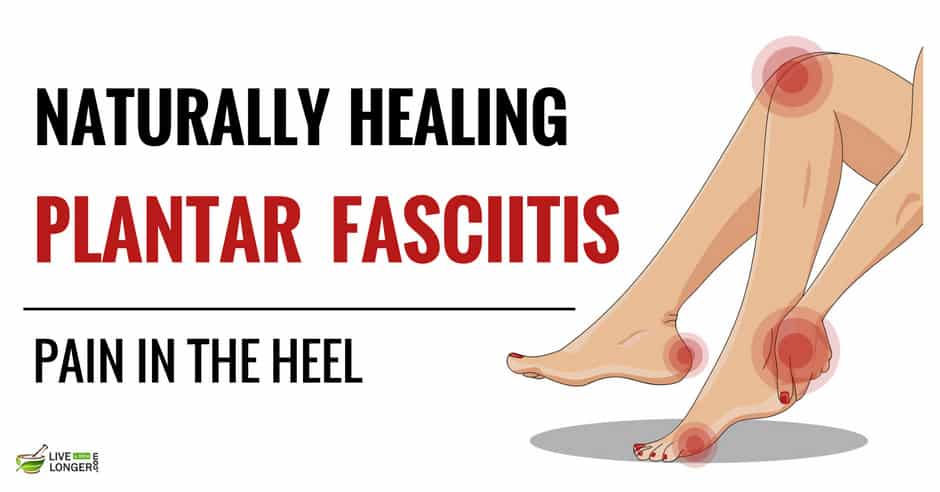10 Best Home Remedies For Plantar Fasciitis Heel Pain
Plantar Fasciitis: Symptoms, Treatment and Prevention

In this last article in the two part series on Plantar Fasciitis, Brad Walker discusses the common symptoms of this painful sports harm as well as the most effective treatments once diagnosed. Brad also outlines some very important preventative measures that are crucial in avoiding Plantar Fasciitis. A foot injury such as plantar fasciitis generally occurs in a single foot. Bilateral plantar fasciitis is unusual and tends to be the result of a systemic arthritic condition that is exceedingly rare among athletes. Males have problems with a somewhat increased occurrence of plantar fasciitis than females, perhaps consequently of higher weight coupled with greater acceleration and ground impact, as well as less versatility in the feet.Typically, the sufferer of plantar fasciitis activities pain upon rising after sleep, particularly the first step out of bed. Such pain is firmly localized at the bony landmark on the anterior medial tubercle of the calcaneus. In some cases, pain may avoid the athlete from walking in a normal heel-toe gait, causing an unusual walk as method of compensation. Less common areas of pain are the forefoot, Achilles tendon, or subtalar joint.After a brief period of walking with this type of ft . injury, the pain usually subsides, but returns again either with vigorous activity or prolonged standing or walking. In the field, an transformed gait or unusual stride style, along with pain during working or jumping activities are tell-tale signs of plantar fasciitis and should be given prompt attention. Further signs of the accident include poor dorsiflexion (raising the forefoot off the ground) anticipated to a shortened gastroc organic, (muscles of the leg). Crouching in a full squat position with the only real of the feet flat on the ground can be utilized as a test, as pain will preclude it for the athlete suffering from plantar fasciitis, leading to an elevation of the heel due to tension in the gastroc complex.TreatmentTreatment of plantar fasciitis is sometimes a slow and annoying process. An application of rehabilitation should be performed with the help of someone licensed and knowledgeable about the affliction. Typically, plantar fasciitis will demand at least six weeks or more to half a year of conservative treatment to be totally remedied. Should such work not provide alleviation to the athlete, more aggressive steps including surgery may be considered.The initial goals of physical therapy should be to increase the passive flexion of the ft . and improve versatility in the foot and ankle, eventually leading to a full return to normal function. Prolonged inactivity in energetic sports is usually the price to be paid for thorough recovery. Fifty percent measures can lead to a serious condition, in some instances severely limiting athletic ability.As a big timeframe is spent in bed during sleeping time, it is important to ensure that the mattress sheets at the base of the foundation do not constrict the foot, leading to plantar flexion where the foot is bent straight out with the toes pointing. This constricts and in so doing shortens the gastroc organic, worsening the problem. A heat pad placed under the muscles of the leg for a few momemts prior to growing may help loosen tension, increase circulation in the lower leg and decrease pain. Also while asleep, a nights splint can be utilized in order to carry the ankle joint in a natural position. This will likely aid in the therapeutic of the plantar fascia and ensure that the feet will not become flexed at night time.Careful attention to footwear is critical in avoiding feet injuries. Every work should be made to wear comfortable shoes with proper arch support, fostering proper ft . posture. Should arch supports prove inadequate, an orthotic footwear is highly recommended. Fortunately, most situations of plantar fasciitis reply well to non-operative treatment.Restoration times however range enormously in one athlete to another, depending on years, general health and physical condition as well as seriousness of injury. A wide period between 6 weeks and 6 months is usually sufficient for proper healing. Additionally, the setting of treatment must be adaptable with respect to the details of a particular athlete?s accident. Methods that show successful in a single patient, may well not improve the personal injury in another.Early on treatment of feet injuries typically includes the use of anti-inflammatory medication, icing, stretching activities, and heel inserts and splints. Cortisone injections may be necessary to achieve satisfactory recovery and retard swelling. In later periods of the rehabilitation process, typically following the first week, glaciers should be discontinued and replaced with heating and massage.It is imperative that any activity known to produce discomfort or trauma to the plantar fascia be immediately discontinued, including any activity regarding repeated impact of the heel on a hard surface, particularly, working. Should pain associated with the damage persist, additional diagnostic studies should be undertaken to rule out other, more exotic causes of heel pain including stress fractures, nerve compression accidental injuries, or collagen disorders of the skin.
10 Best Home Remedies For Plantar Fasciitis Heel Pain's IMAGE
Related Images with 10 Best Home Remedies For Plantar Fasciitis Heel Pain
Home Remedies for Plantar Fasciitis Top 10 Home Remedies

Exercises For Plantar Fasciitis

Home Remedies For Plantar Fascia or Plantar Fasciitis

Home Remedies for Plantar Fasciitis Top 10 Home Remedies





0 komentar: